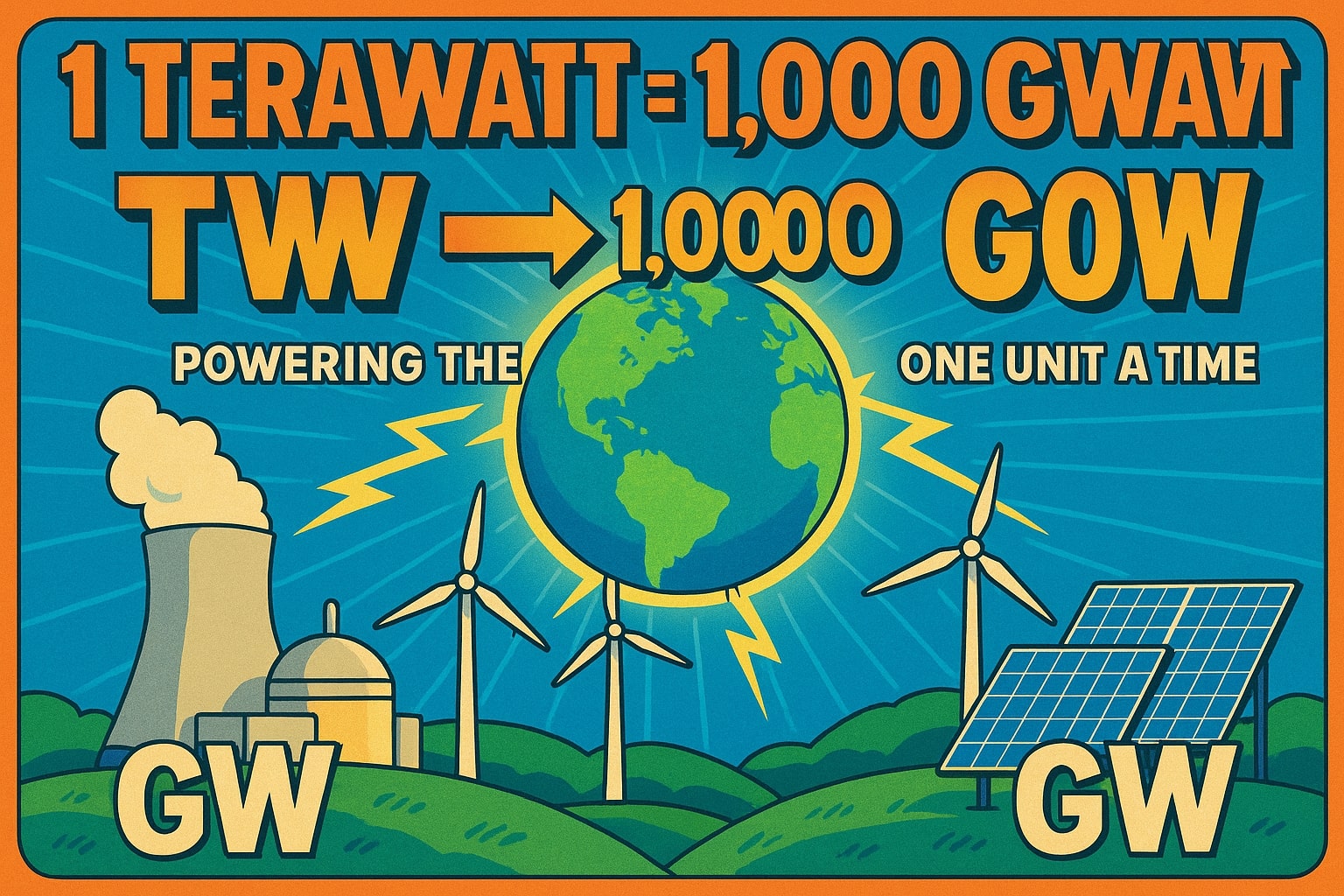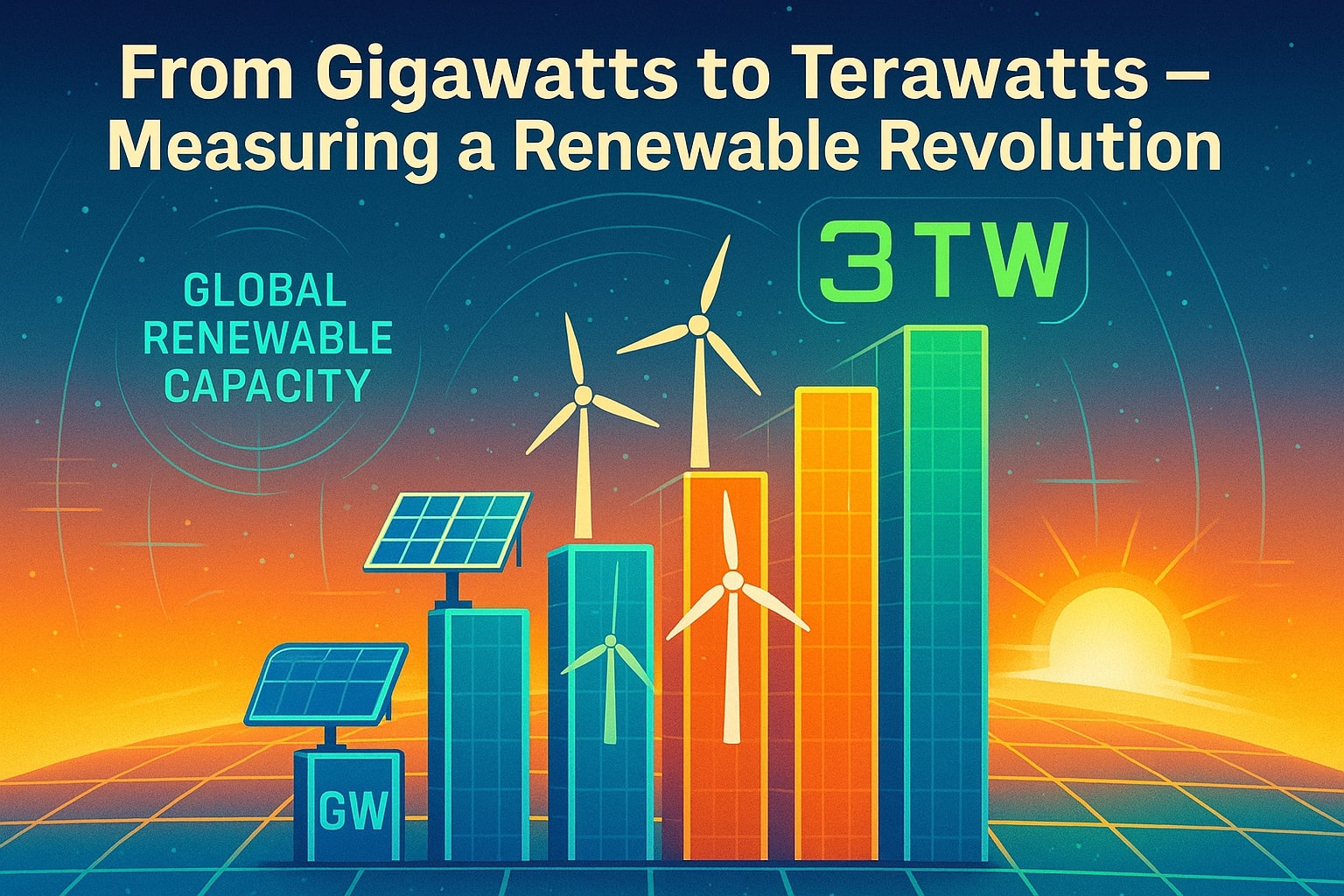Terawatt to Gigawatt – How to convert TW to GW
Need to convert terawatt to gigawatt? These two power units measure electricity at some of the highest scales imaginable. Terawatts track the power consumption of entire nations or the world, while gigawatts are commonly used for massive energy projects like nuclear plants, offshore wind farms, and regional grids. While they’re separated by a factor of 1,000, the conversion is straightforward because both are part of the metric system. Let’s break down the math, where each unit fits, and why scaling between them is so important in global energy discussions.

What is a terawatt (TW)?
A terawatt is a colossal unit of power equal to 1 trillion watts (1 × 10¹² W) or 1,000 gigawatts (GW). It’s used to describe the total output of countries, continents, or global energy consumption.
For context, the world’s electricity demand averages around 18–20 TW at any given moment, according to the International Energy Agency (IEA), and this figure continues to grow as electrification and renewable energy expand worldwide.
What is a gigawatt (GW)?
A gigawatt is a large but more familiar unit, equal to 1 billion watts (1 × 10⁹ W) or 1,000 megawatts (MW). It’s commonly used to express the generating capacity of major power plants, regional grids, and renewable projects.
For example, the largest offshore wind farms in Europe produce over 3 GW of electricity, while a typical nuclear reactor generates roughly 1 GW, enough to power hundreds of thousands of homes.
How to convert terawatt to gigawatt
The math is simple:
1 terawatt = 1,000 gigawatts (1 TW = 10³ GW)
To convert:
Gigawatts (GW) = Terawatts (TW) × 1,000
Example: If global solar generation adds 2 TW of capacity by 2030:
2 × 1,000 = 2,000 GW
Need quick answers? Use our Power Converter or explore other Conversion tools for instant calculations.
Did you know?
-
Global scale: Humanity’s total electricity generation capacity exceeds 8 TW, equal to more than 8,000 GW across all power sources.
-
Renewable benchmarks: According to the International Renewable Energy Agency (IRENA), solar energy alone is projected to surpass 4 TW globally by the early 2030s.
-
Historic energy use: In the early 20th century, total global electricity production was under 10 GW, showing how far demand has grown in just over a century.
-
Natural energy: Earth’s atmosphere receives about 173,000 TW of solar power every day — an almost inconceivable figure compared to our current 20-TW consumption.
Why Terawatts Became the Standard for Global Energy
As renewable energy scaled up in the 21st century, national and international goals quickly moved beyond gigawatts. Reports from Bloomberg New Energy Finance note that governments and energy organizations adopted terawatts to simplify reporting and emphasize the scale of new installations.
For instance, in 2022, global installed renewable capacity passed 3 TW. By using terawatts, policymakers and investors could more easily compare progress and communicate goals, avoiding long strings of zeroes when listing figures in gigawatts.

Scaling Big Energy Numbers
Converting terawatt to gigawatt is as easy as multiplying by 1,000, but it also illustrates just how massive these numbers are. Gigawatts make sense for individual projects or national grids, while terawatts reveal the true scope of humanity’s energy needs and ambitions.
For fast and precise results, try our Power Converter or explore more Conversion tools to handle any power conversion, no matter how large.

